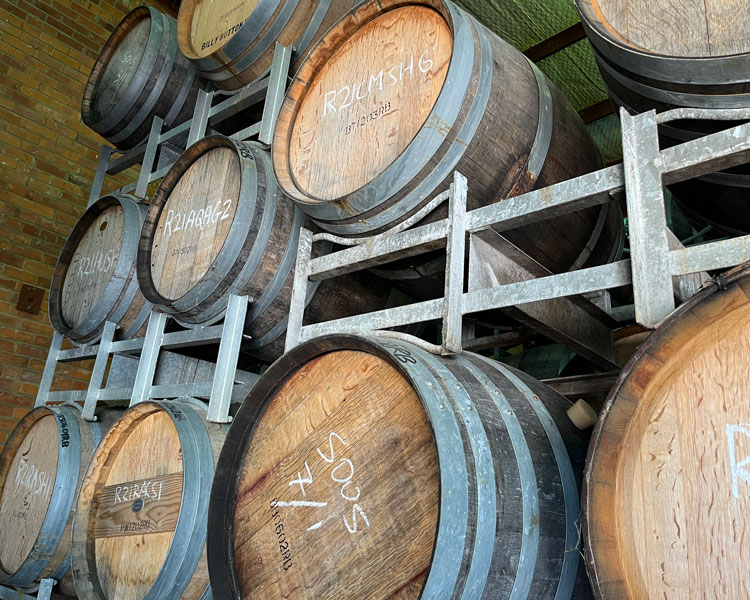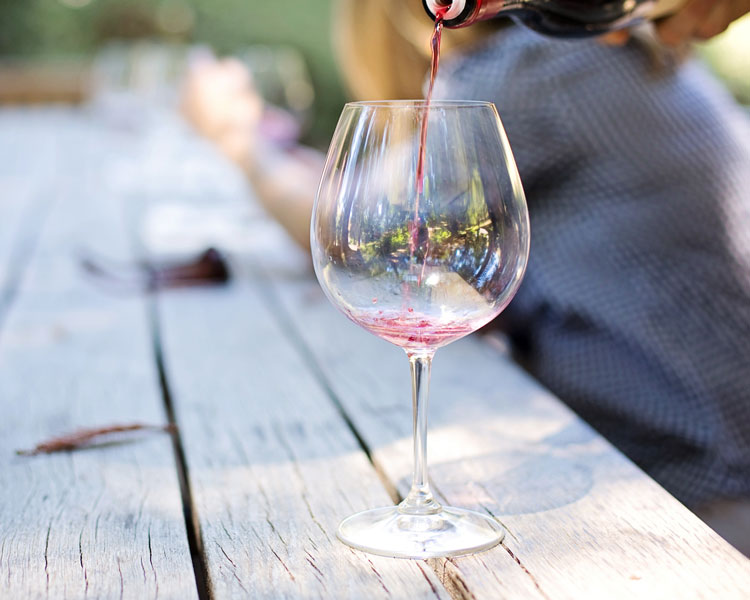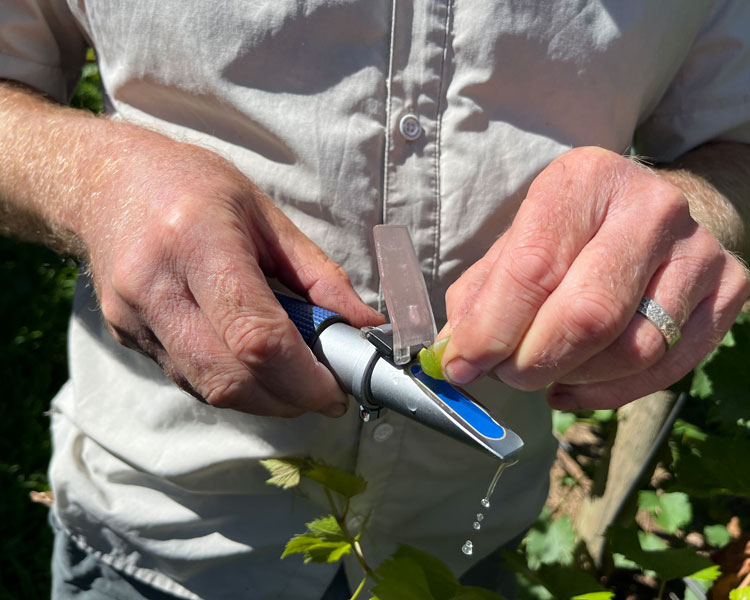A Day in the Life: Billy Button Winemakers During Vintage
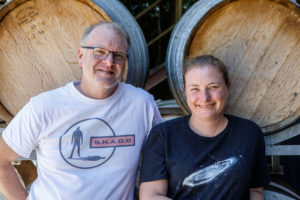
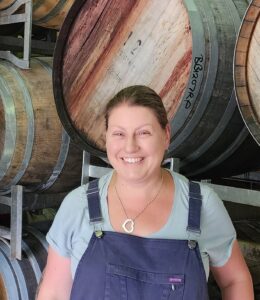
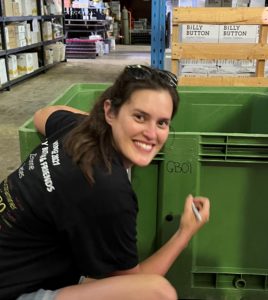
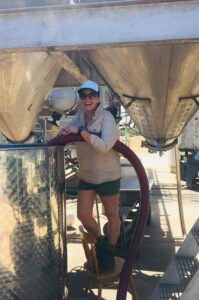
It’s the most frenetic time of year in the winery, where most of the action happens, jam packed into a short period of time. Every decision counts and can impact the quality of the end wines. There’s much at stake to get things right, living on little sleep with much to consider. We’re often asked in our Cellar Doors what a winemaker’s typical day looks like during vintage. So, we asked Head Winemakers Glenn James and Jo Marsh to document a recent day and explain some of the process that the team undertake – welcome to a day in the life of a winemaker here at Billy Button Wines.
The most important thing to note, is that a day in the life of a winemaker at Billy Button is varied. No two days are ever the same, especially during vintage. Our team of five winemakers include Glenn James and Jo Marsh – our head Co-Chief Winemakers – Melissa – our Senior Winemaker – with Winemakers Alex and Meg (who are are part-time winemakers and full-time mothers). Handling many different varieties and types of wine, Billy Button Wines alone makes more than 30 different wines, and we also help out some of our friends in the Alpine Valley’s region. You could say there’s a lot of fruit on our plates!
Our day can include everything from morning vineyard visits and receiving multiple parcels of fruit for processing (we usually take more than 150 over a typical vintage), to ferment monitoring, fining trials, additions, lab analysis, time spent on the forklift and, of course, cleaning.
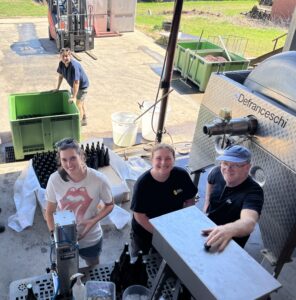
It’s all-hands-on-deck throughout vintage, with staff from our cellar door and even some of our admin and marketing team helping during peak harvest when needed.
The 2022 vintage is quite late for us due to a very cool growing season, so we started picking fruit in late February. This year, we’re sourcing fruit from 15 growers – 11 in the Alpine Valleys and four in the King Valley. This means a lot of driving around the region to assess the quality of the fruit and work out the optimal time to pick! With more than 30 varieties coming in from the vineyards, we have a lot of balls to keep in the air when it comes to monitoring vineyards and making picking decisions.
Doing the Baumè Rounds
This morning, our first stop is at the winery because we have Grüner Veltliner coming in from the Antonello vineyard. Whites are picked very early in the morning in order to stay cool, so the fruit arrives at 7am. We have to machine-pick most of our fruit this year as hand-pickers are hard to source because of the effects of the pandemic. Often there’s a few more international pickers to draw upon, but with borders closed in the lead up to vintage, it’s left us having to resource slightly differently. Getting fruit processed is always the priority, so it is tipped straight into the press, and we begin pressing it to tank.
Next, it’s time for the white Baumè round – that means checking the Baumè, or sugar level, and temperature of all our ferments, as well as tasting them. If they are getting a bit warm, we need to cool them down, either with cooling plates in the tanks or, for barrels, moving them into the cool room. We also need to feed the yeast different nutrients at various stages of the ferment to keep them happy.
The red Baumè round is a bit more involved. Because of our small-batch ethos, most of the red wines we make are fermented in small open-top tubs that are hand-plunged. Once ferment begins, the grape skins sit on the top of the juice creating a cap. Plunging is a method of keeping the cap wet by pushing it down and immersing it in the juice as it ferments.
For the red wines, we like to keep our options open. Depending on the variety, we often make different batches using different techniques, such as crushed and destemmed, cold soaking, whole berries and whole bunch. This means we have a lot of ferments. During peak vintage, it can often take the best part of the day for one person to plunge all the red ferments twice. At this stage in 2022, we haven’t picked any reds, which is very unusual for us at this point in vintage, so we have no new reds to plunge today.
Working the Juices and Ferments
With the Baumè round finished, it’s time to focus on the juices we have recently pressed. We racked some Prosecco yesterday, which means transferring the clear juice from the top of the grape solids that have settled to the bottom of the tank. The juice is up to 14 degrees now, so it is time to add yeast to it.
At Billy Button, we use a combination of indigenous yeast, which comes in on the grape from the vineyard, as well as selected yeasts, which come freeze-dried in a packet. We use these yeasts predominantly for our white wines and select them to promote aromatics and enhance mouthfeel. They are also selected for their tolerance to higher acids because our cool climate means we have lots of natural acidity in our wines. We also choose them for their ability to ferment at low temperatures. These yeasts are carefully rehydrated and, once added to the juice, will eventually outnumber indigenous yeast from the vineyard.
Billy Button’s MVP (most valuable player)
Our winemakers keep an eye on the press while we head out to the Greenacres vineyard in Merriang South to look at the Tempranillo that is nearly ready. Grower Bri has seven different clones of Tempranillo here that each must be sampled separately – that involves a lot of walking up and down the rows!
Once we’ve picked all the samples and tasted the berries along the way, we take them back to the winery and ‘process’ them by putting them in a mini-press to extract the juice. Then we test that juice in the lab to check the sugar, acid and nitrogen levels. We do this wine analysis with our OenoFoss, which has been an exciting addition to the Billy Button team. We call the OenoFoss a team member because it really is like an extra set of hands during vintage.
This tiny blue box of goodness saves the winemaking team so much time because it allows us to test the must, ferments, finished wine and sweet wine. It provides results, including levels of ethanol, sugars, organic acids and pH. We use the OenoFoss at all stages of winemaking, from picking decisions and ferment monitoring right through to bottling. It provides all our analytical requirements in-house and we no longer need to send samples to a third-party laboratory for testing. It provides unlimited and instant results and saves us a bundle of time and, in turn, has upped our quality control in the winery. Happy days!
Assessing and Planning the Fruit Intakes
The results from the Tempranillo samples indicate we will probably start picking early next week. Bri (Brian Lewis of Greenacres Vineyard) prefers to hand-pick the Tempranillo as it has quite brittle canes so machine-picking can damage the vine. We therefore have to carefully plan the intake, as Bri can’t pick all the fruit in one day and the different clones will come in spread out over the week.
Bob McNamara of Bush Track Wines arrives with 600kg of his hand-picked ‘special clones’ of Shiraz. We put this in the cool room to process later in the week when we have some more of this fruit.
Meanwhile, our winemakers have started filling some Chardonnay to barrel; this fruit has been pressed over the past couple of days. We’re lucky to have a split-level winery, with the main winery building about 1.5m higher than our processing pad, so we can fill the barrels with gravity.
Our Exciting New Arrival
Then the most exciting thing of the day – and possibly all vintage – happens: the new high-tech Scharfenberger selective sorting crusher arrives. It’s much bigger in real life than we pictured! We’re thrilled because it is going to speed up our processing and increase our capacity significantly, while also improving the quality of our wines by removing everything that isn’t grapes from the fruit. It’s the single biggest investment we have made in the business.
Finishing up for the Day
Before we know it, it’s 5pm and time to check all the ferments again and manage the cooling. The second press load has finished, so our winemakers are emptying the press and giving it a quick clean ready for the next load tomorrow. We’re picking the Arneis at Antonello vineyard tomorrow, so we run the bins out to the vineyard ready for the fruit.
All that’s left to do before we go home is clean. Our high-pressure Karcher is by far the most used piece of equipment in the winery. Everything gets a hot wash – tanks, picking bins, the press, the crusher, the concrete pad, and the winery floor. We even use the Karcher to hot wash our barrels by attaching a barrel washer with a spinning head. We also steam all our barrels before we fill them with the new vintage to keep any nasties at bay, such as bacteria, which can spoil the wine.
Before we go home, we set up the press and lines for tomorrow’s delivery. We check the time – 7.30pm. Time to go home, cook dinner, go to bed and do it all again tomorrow!


